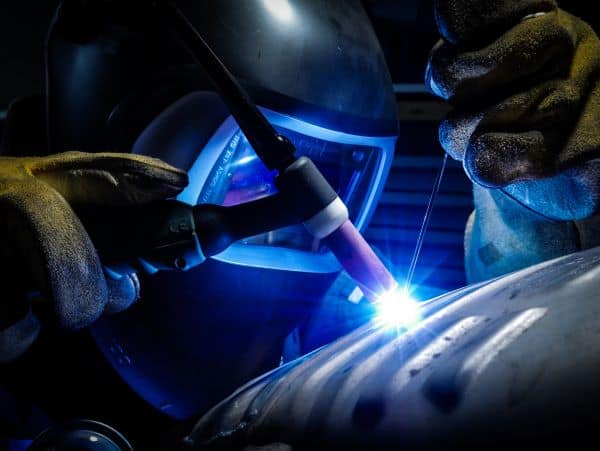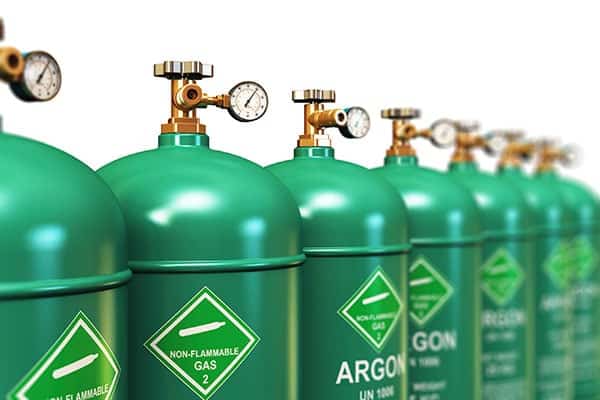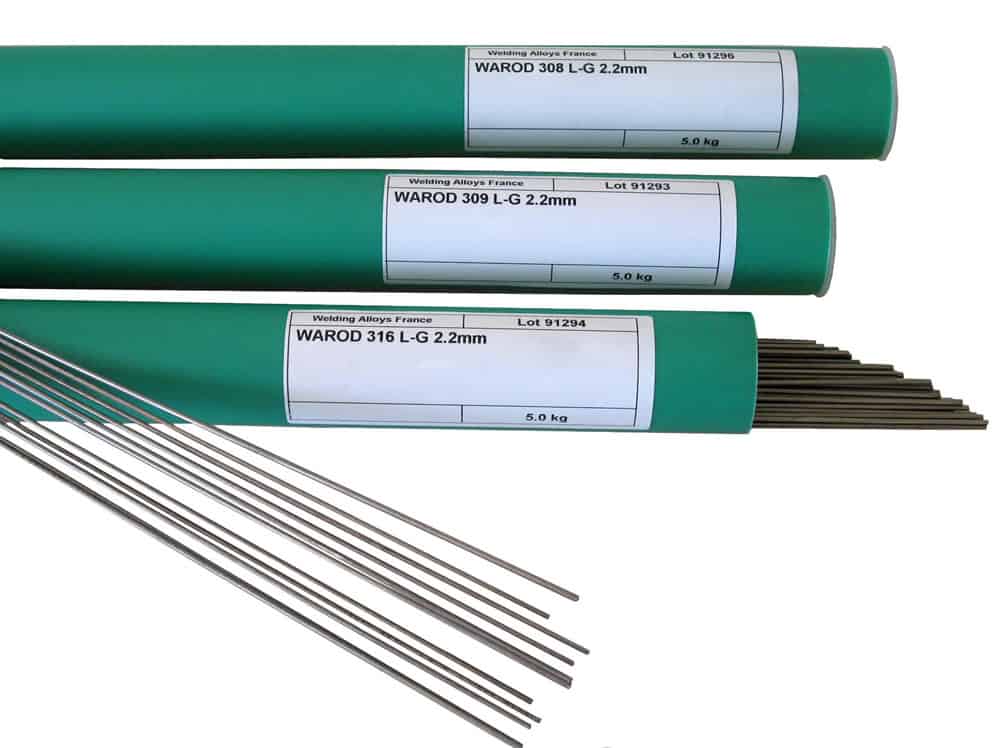TIG welding is one of the most adopted ways of welding and yet there are a lot of questions that are still being asked regarding this method. And any discussions of TIG welding will not be complete without talking about Argon gas and its use.
Well, this article is dedicated wholly to Argon gas itself. If you start from the very basics, one may ask, why is Argon gas considered to be the suitable gas for TIG welding?

Starting from the cleanliness that this gas maintains to the kind of welding quality that it can result in, there are many reasons for Argon gas to be considered suitable for TIG welding. Due to its extreme inert nature, it is said to be the only gas that helps in TIG welding. Yet, at times some other gases are mixed with Argon for certain specific needs.
This post will give you a very detailed answer. So don’t hesitate to read further!
7 Reasons to Use Argon as Shielding gas for TIG welding
You often might have heard how Argon is the most suitable gas that can go with the requirements of TIG welding. Well from the following points you will know why it is said so…
1. Lazy to react with other elements
Yes, you heard that right. Argon is a lazy gas that does not want to be involved with anything else. It is inert, thereby prevents itself from getting reacted to any other element. And this makes it the only gas that TIG welding cares for.
Do you know why? It is because TIG welding as its name suggests uses a tungsten rod for the welding process and tungsten can easily get oxidized if it gets in touch with other gases like oxygen, nitrogen, or hydrogen. You don’t want to bring your tungsten rods anywhere near these or you will see how easily the rods can get affected.
Moreover, you can forget a perfect welding process with these gases. TIG weld can’t be done with any other than Argon gas as the main constituent in shielding.
2. Protection at high temperatures
Another major reason why Argon is used in TIG welding is because of the protection that it guarantees for a person who is welding. It can prevent the effect of high temperatures.
It is in these high temperatures that the rod gets melted and the reaction happens with other gases. But, with Argon it is not a problem.
3. Stability of the arc
The most important necessity for a good weld is a stable arc. And a stable arc is the result of few factors coming together. You need as little spatter as possible, good bead shape throughout the process and the length of the arc should stay the same as well.
Argon promises you these because of its inert properties. To get trouble-free welding in TIG welding, Argon is therefore necessary.

4. Good Finished look
Want to have an aesthetic look to the weld? Then Argon is the only answer. Due to the same reasons that we talked about in the previous point, only Argon can give an aesthetic result.
This gas ensures a good weld penetration and better appearance to the whole process. Imagine doing all that you can and ending up with a bad weld. Nobody would want that.
5. Argon can be blended with others
This gas comes in various purity grades and can be easily blended with other gases to give the desired result in certain scenarios. We will talk about it in detail later in this post.
6. Less annealing colors:
This happens when your major elements used in the weld get evaporated or diffused making the surrounding area prone to rust.
This occurs primarily in TIG welding of Stainless steel. It is recommended that using Argon to cover the backside of the weld can help to mitigate this issue.
Argon therefore can help in the faster cleaning of the weld. Sometimes, when cleaning the backside of the weld is impossible using Argon can reduce the trouble
7. Cheap:
Argon is dirt cheap when compared to other shielding gases. Yet in some areas of the world Argon might be costlier than some gases like helium. But, generally, argon is considered to be cheap because it is easily available or abundant.
See also: What shielding gases can be used for TIG welding?
Are there any side effects or disadvantages to using Argon gas in TIG welding?
As argon is the only gas that makes TIG welding a smooth process, it is in great demand for the same. But, what about the downside of using this gas? Indeed there are cons of using Argon and they are as follows:
1.) Unhealthy: Argon is not a poisonous gas. It is indeed an odorless and colorless gas that is inert. Then what is the problem? No matter these characteristics, Argon turns out to be problematic depending on the place where you are working.
You need to know that other than Oxygen, inhaling a gas can never result in a positive outcome. And in Argon’s case, beware that you are not taking in a huge quantity of Argon and this can happen if you are working in a cramped space.
Inhaling too much Argon can affect your lungs. Argon is many times denser than normal air. And depending upon the intensity the effect on your health will be high. Your breathing might even be forced to stop eventually leading to unconsciousness.
2.) Harmful for eyes and skin: Even when Argon is said to be not harmful to humans in a direct way, you will often find how for TIG welding the Argon cylinder comes with a note of precaution.
Now, this is because of how pressurized the gas inside the cylinder. And carelessness can lead to the leak of this pressurized Argon that can harm your eyes or skin if they get in contact with it.
3.) Danger of fire: You might be thinking how it is possible if the gas is non-reactive. Well, yes. You are not wrong in thinking so.
Argon by itself is not inflammable yet a pressurized cylinder of Argon can be a danger if the atmosphere temperature is too high. In extreme cases, tragic accidents can happen with the cylinder exploding.
Due to these reasons, Argon can be called the ‘necessary evil’ in TIG welding. Still, It is you who can keep it harmless the way it is. Be careful while using such elements in welding let alone TIG welding.
Why is it said that Argon gas is best for stainless steel TIG welding?
Stainless steel has high heat resistant nature and unlike other elements stainless steel exhibits a difficult nature while welding is being done. Post welding, if the process was cumbersome, then stainless steel is sure to show the scratches and even the simplest of marks.
Stainless steel also requires good gas coverage for a stable arc and considerable control over the whole process. Moreover, spatter should be less to get a good weld. The best shielding gas therefore for TIG welding stainless steel is Argon.
Of course, for TIG, Argon is the only choice but when the process involves Stainless steel, to get a beautiful weld with no marks or scratches you need to have Argon as the major component.
Is it possible to TIG weld without Argon gas?
The plain answer would be a NO. From the discussion, we had here and from other articles about TIG welding, you might be very sure about the working of TIG. If you have not yet gone through them, we recommend you to do so to get a clear grasp on the working of the whole process.
As TIG consists of Tungsten rods, they need to be kept intact throughout the process. They tend to get oxidized easily if they come in contact with oxygen or for that matter nitrogen or any other reactive gas. Another major use of Argon for TIG welding is how the gas is used to cool the weld torches.
That said, you cannot completely disregard the possibility. Do you care to go to that extent where you are ready to struggle a bit more for TIG welding? Then, you might make the impossible possible. But you will have to make certain sacrifices too.
Wondering how you can do it? With the help of modern welding units. Yes, these unconventional units might to an extent help in TIG welding without the assistance of Argon gas, but, for that, you will have to pay a price. Those are high precision and quality. Due to the same reason, it is recommended to TIG weld with gas.
See also: Is TIG welding good for home use?
Is there any other alternative to do TIG welding without gas?
Yes, there is one alternative and that is using a Flux Cored TIG wire. This is where the inside part of the electrodes is filled with flux. Flux is needed to protect the electrode from high temperatures.
However, in these electrodes, there might be other ingredients as well. You can find flux-cored TIG fillers that are stainless that can be used in various instances. Yet this method is not widely accepted in the welding world.

WARods are a kind of flux-cored TIG wire. These are available in the market. They are user-friendly and free of complications. But these are recommended for root pass TIG welding where gas purging is impossible. These claim to give a good penetration through the full part of the pipe.
Even with all these, TIG welding without gas is kind of an absurd idea that will never be fully accepted in the welding world, mainly for the fact that TIG welding is the smoothest when Argon gas is used for shielding.
When is Argon gas mixed with other gases in TIG welding?
For TIG welding Argon covers almost all requirements of welding. Yet there comes a situation when you need more than Argon to create the desired result or that aesthetic weld that you have planned.
As we have mentioned way before in this post, Argon can be easily blended with other gases. This makes it even more useful for TIG welding.
Four combinations of gases for TIG welding include Argon + Carbon Dioxide, Argon + Oxygen, Argon + Nitrogen, Argon + Helium. In these, Helium and Argon are the only noble gases here.
The combination of Argon and Carbon Dioxide is mostly preferred while working in stainless steel for a better quality weld than when Argon is used solely. Another combination that is used for the welding of stainless steel and aluminum is Argon and Helium.
The presence of Helium can result in better penetration and thereby increase the welding speed. Argon with Oxygen on the other hand is used for better arc stability and less surface tension of the weld pool that helps in the better wetting of the weld area on the base material that is solid.
But due to the risk of oxidation, Oxygen is used in a very small amount and is never used for works on Magnesium, Copper, and Aluminium. One has to be careful with Nitrogen too as a high amount of it can lead to high fragility and porosity of the metal.
But, if used in the optimal quantity the combination of the Argon and Nitrogen can help in arc stability and a fast welding process like Oxygen.
Except for Argon and Helium, all the other combinations are not used commonly as the gases are active. Argon with Helium is a safe combination that can be used in any amount to get the desired result.
The following table shows the effects on TIG welding based on the intensity of combination of Argon and Helium used.
| Ignition | Arc Stability | Weld width | Penetration | Speed | |
| Ar | strong | strong | medium | medium | medium |
| Ar/H | strong | strong | strong | strong | strong |
| He | weak | weak | strong | strong | strong |
| He/Ar
25/75 |
medium | strong | strong | medium | strong |
| He/Ar
50/50 |
weak | medium | strong | strong | strong |
We hope that this post helped you to keep an eagle eye view throughout the blog and that your doubts about TIG welding and Argon gas have been cleared.
Do check out our latest blogs for more such engaging works!






